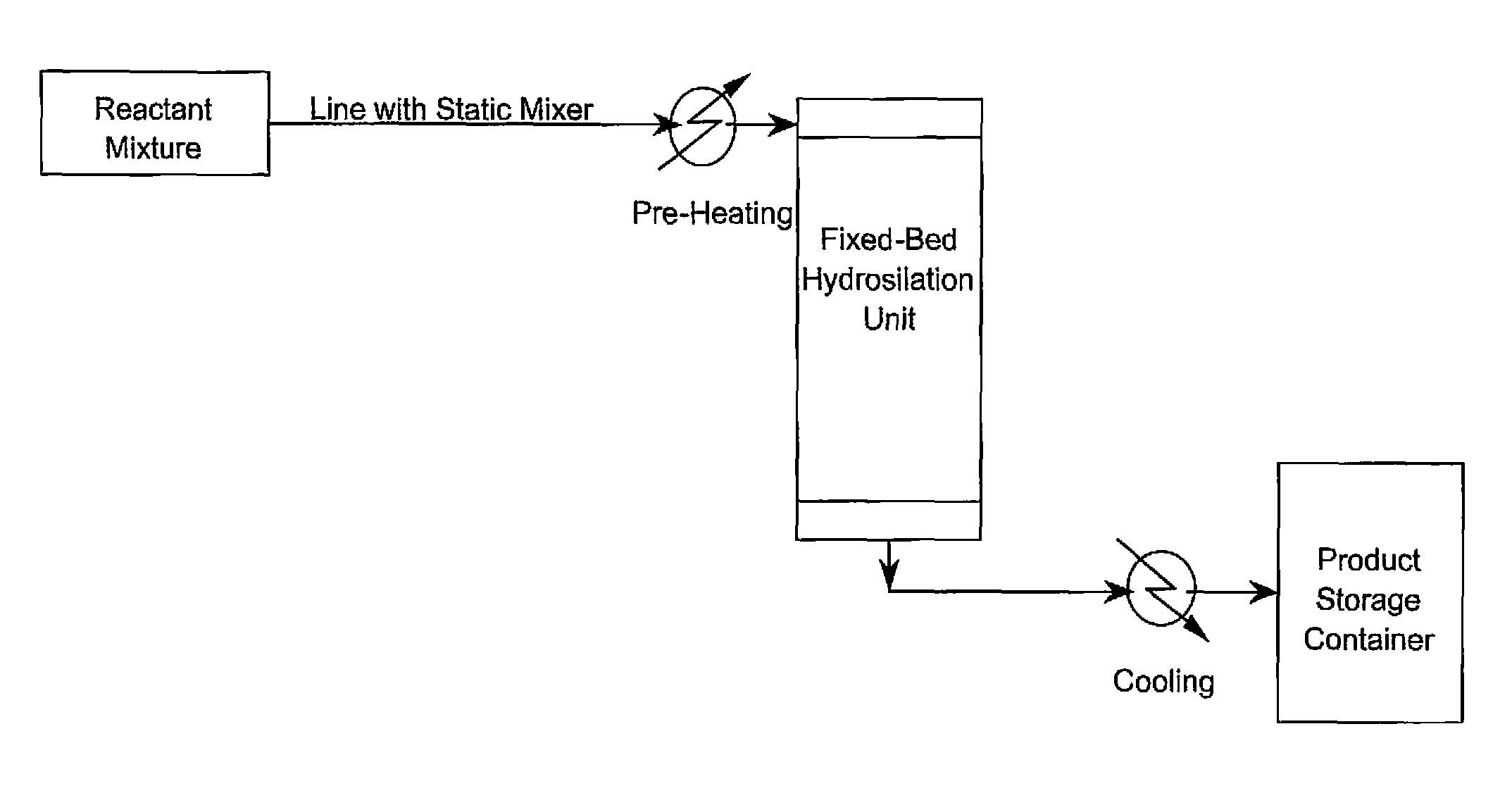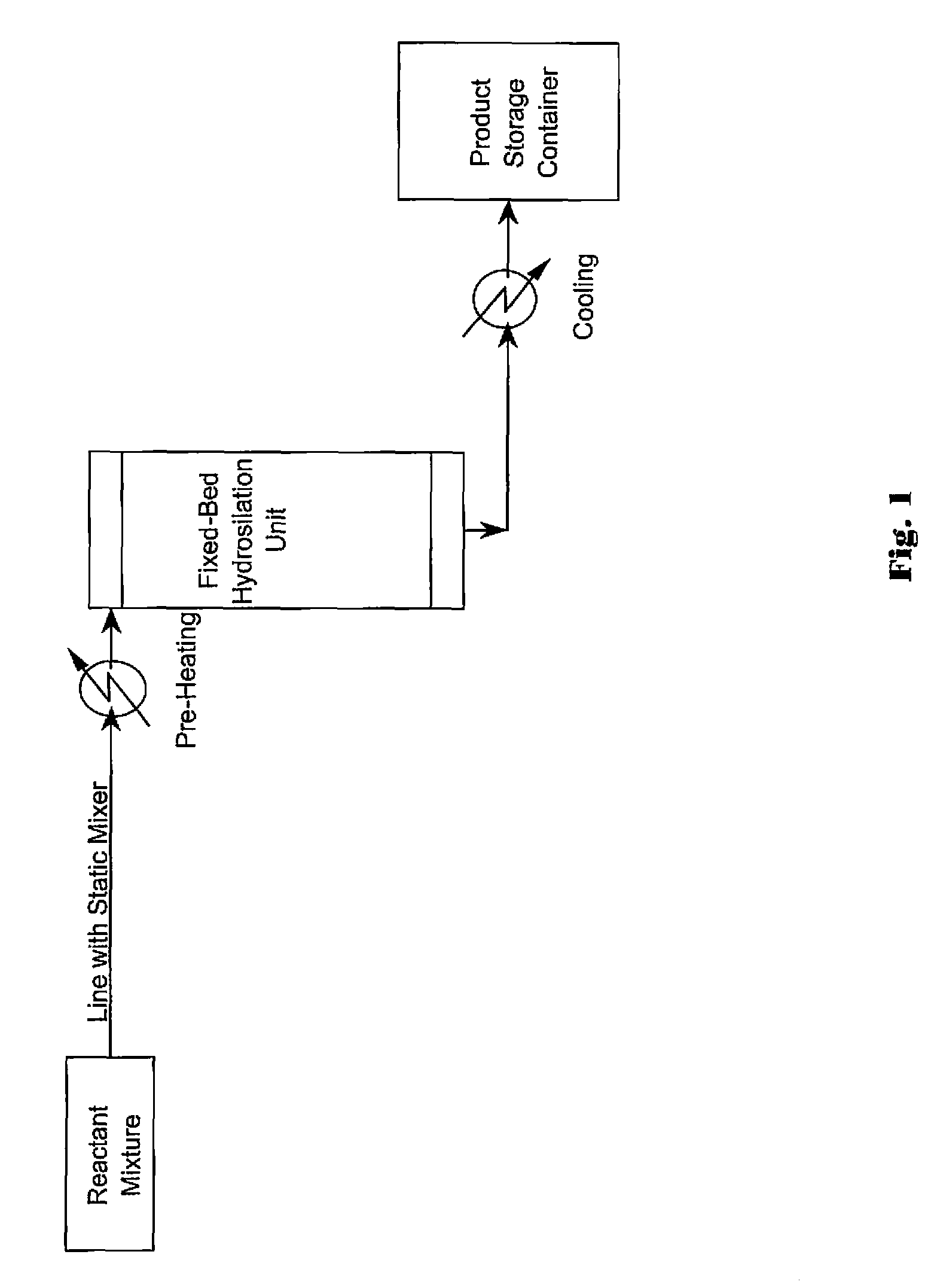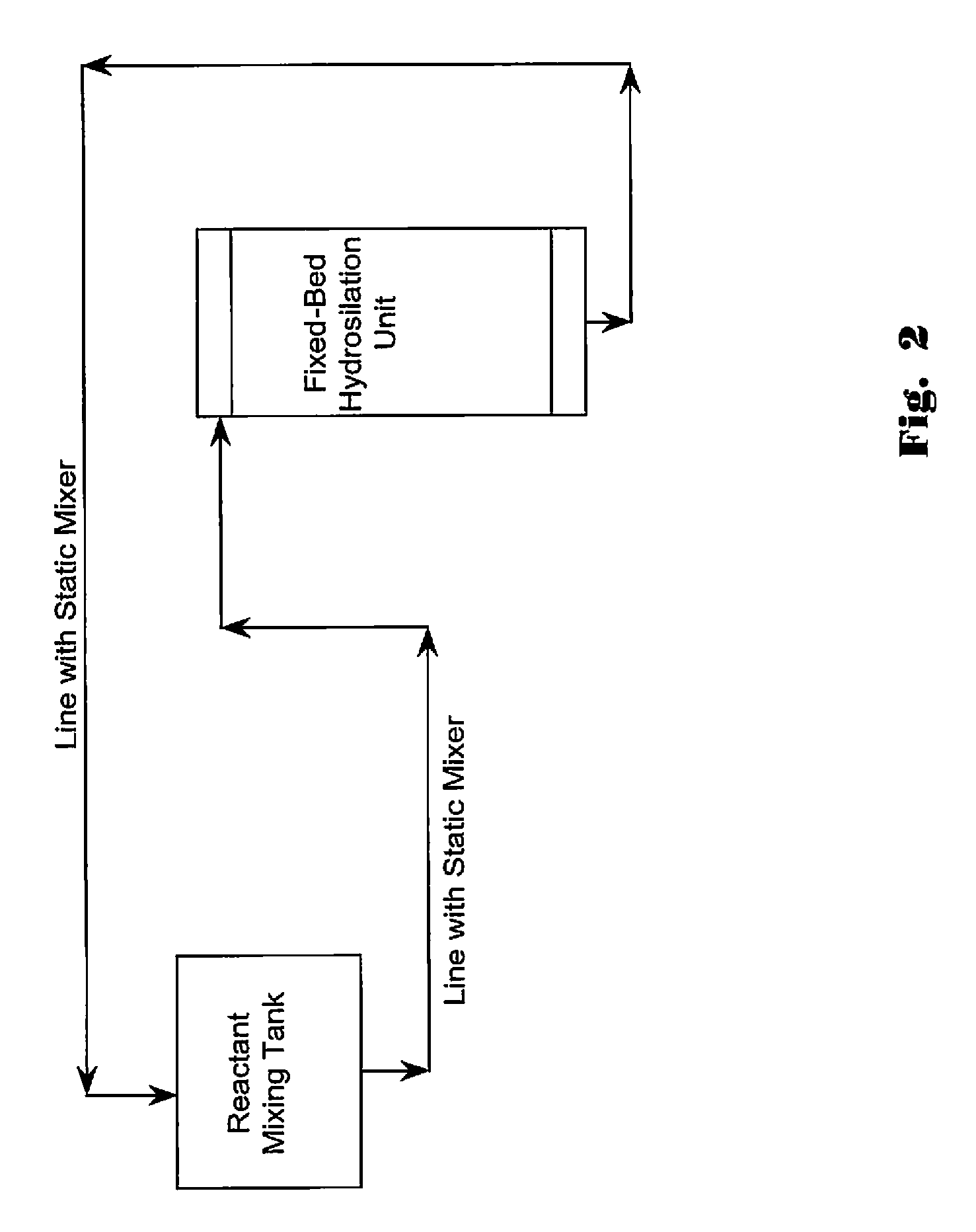Process of manufacturing organosilicon products with improved quality using heterogeneous precious metal catalysts
a precious metal catalyst and heterogeneous technology, applied in the direction of metal/metal-oxide/metal-hydroxide catalyst, physical/chemical process catalyst, organic chemistry, etc., can solve the problems of black particle formation, significant precious metal waste, and high color in organosilicon products, so as to eliminate the problem of precious metal presence. , the effect of improving the quality of the produ
- Summary
- Abstract
- Description
- Claims
- Application Information
AI Technical Summary
Benefits of technology
Problems solved by technology
Method used
Image
Examples
example 1a
[0110]This Example illustrates the invention and was conducted as a batch process.[0111]Reactants: MD′M (412 grams) and 1-octene (226 grams, in excess)[0112]Catalyst: 3.6% Pt(0) / Silica spheres from Johnson Matthey (0.09 gram of solid beads, 5 ppm Pt equivalent)[0113]Reaction Temp.: 110° C.[0114]Pressure: atmospheric pressure[0115]Procedure: MD′M and catalyst beads were introduced into the batch reactor first, and heated to 110° C. 1-Octene was fed into the reactor with control of the exotherm of the reaction. After 1-octene addition, the reactor was held at 110° C. for an additional 1-2 hours to complete reaction.[0116]Results:
[0117]Conversion: 99.8%
[0118]Product Color: 6 Pt / Co
[0119]Pt content in filtered product: 0.19 ppm
[0120]1-Octene isomerization: 5.07% of initial total 1-octene
[0121](1) The reaction showed very high conversion since heterogeneous catalyst did not lose reactivity during the reaction. (2) The product showed very low color and very low platinum content. (3) Black ...
example 1b
[0122]This Example illustrates the invention and was conducted as a fixed bed process with batch recirculation mode as illustrated in FIG. 2.[0123]Reactants in Batch: MD′M (653 grams) and 1-octene (347 grams, in excess).[0124]Total Batch Size: 1000 grams or 1282 cm3 [0125]Catalyst Packed in Fixed-Bed: 3.6% Pt(0) / Silica spheres from Johnson Matthey[0126]Total Packing Volume of Fixed Bed: 24.7 cm3 [0127]Weight of Packed Catalyst: 12.55 grams[0128]Packing Density: 0.508 g / cm3 [0129]Fixed-Bed Reactor Temp.: 110° C.[0130]Pressure: atmospheric pressure[0131]Mixture Recirculation Rate: 2.68 grams / min or 3.44 cm3 / min[0132]Total Recirculation Time: 53.5 hrs.[0133]Results:
[0134]Conversion: 98.4%
[0135]Product Color: 3 Pt / Co
[0136]Pt content in product: 0.27 ppm
[0137]Space Time: 61.8 min
[0138]Space Time Yield: 1.49 g product / (hour·g catalyst bead)
example 2a
[0151]This Example illustrates the invention and was conducted as a batch process[0152]Reactants: M′D45M′ (1093 grams) and Eugenol (107 grams, in excess)[0153]Catalyst: 3.6% Pt(0) / Silica spheres from Johnson Matthey (0.084 gram of solid beads, 2.5 ppm Pt)[0154]Reaction Temp.: 120° C.[0155]Pressure: atmospheric pressure[0156]Procedure: M′D45M′, Eugenol, and catalyst beads were introduced into the batch reactor, and heated to 120° C. After exotherm of the reaction, reactor was held at 120° C. for an additional 1-2 hrs to complete the reaction.[0157]Results:
[0158]Conversion: 96.8%
[0159]Product Color: 6 Pt / Co
[0160]Pt content in filtered product: 0.02 ppm
[0161]Eugenol isomerization: 0.9% of initial total Eugenol
[0162](1) The product showed very low color and very low platinum content. (2) Black particle formation over time and customer complaints can be eliminated. (3) Platinum can be reused or recovered by incineration, which could generate significant cost savings. (4) Using heterogene...
PUM
| Property | Measurement | Unit |
|---|---|---|
| particle size | aaaaa | aaaaa |
| particle diameter | aaaaa | aaaaa |
| pressure | aaaaa | aaaaa |
Abstract
Description
Claims
Application Information
 Login to View More
Login to View More - R&D
- Intellectual Property
- Life Sciences
- Materials
- Tech Scout
- Unparalleled Data Quality
- Higher Quality Content
- 60% Fewer Hallucinations
Browse by: Latest US Patents, China's latest patents, Technical Efficacy Thesaurus, Application Domain, Technology Topic, Popular Technical Reports.
© 2025 PatSnap. All rights reserved.Legal|Privacy policy|Modern Slavery Act Transparency Statement|Sitemap|About US| Contact US: help@patsnap.com



